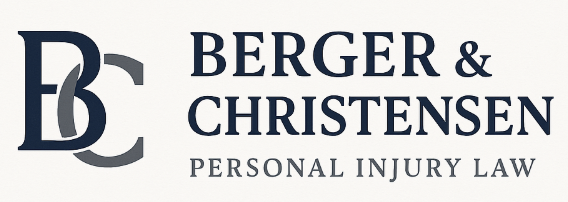Why are Medical Bills so Confusing?
Understanding Medical Bills After an Accident
A huge part of our job at JB Legal is helping clients navigate medical bills and ultimately get reimbursed for the bills they incur after being injured in an accident. One thing is absolutely true: medical billing is confusing—even to me.
I’ve had two times in my life when I faced huge medical bills. The first was about 20 years ago when I was in a bad motorcycle accident. The second was when my daughter needed emergency stomach surgery a couple of years ago. Both involved long hospital stays, followed by months and months of bill after bill. And the bills might as well have been written in Greek.
Don’t get me wrong—doctors, nurses, and hospital staff do incredibly important work. I’d guess they’re just as frustrated with the billing process as we are. None of my criticism is directed at those who care for us during our most difficult times.
A Glimpse Behind the Curtain
A couple of years ago, I was in a deposition with a hospital executive who oversaw billing and rates. After a couple of hours with him, one thing was clear: prices often don’t mean much.
Before we dive deeper into that, here are a few key terms to help you decode your medical bills:
Top-Line Price – This is the total price listed on the bill. It’s not what you’ll pay, not what your insurance will pay, and not what the service actually costs. It’s just the billed amount.
CPT/ICD Codes – These are numerical codes assigned to services. Each office visit, procedure, medication, or piece of equipment has its own code. These codes are used by healthcare providers, insurance companies, Medicaid, and Medicare to standardize billing and reimbursement.
Explanation of Benefits (EOB) – This is the document that often says, “This is not a bill.” It shows the top-line charge, how much your insurance paid, any adjustments or discounts, and what your financial responsibility is.
Contract Rate – This is the discounted rate your insurance company has negotiated with an in-network provider. For example, the top-line price might be $300, but your insurance’s contract rate could be $175.
Deductible – The amount you must pay out-of-pocket before your insurance begins to cover expenses.
Co-Pay – A pre-negotiated amount you pay for a specific type of visit, like $80 to see a specialist.
Co-Insurance – This kicks in after your deductible is met. Typically, you pay a percentage of each bill (e.g., 20%), and your insurance covers the rest.
Out-of-Pocket Maximum – The most you’ll have to pay in a year. Once you hit this limit (say $13,000 for a family), your plan should cover 100% of remaining costs.
Medicare Rate – The fixed amount Medicare assigns to each unit of service. If a visit costs $175 but Medicare’s rate is $7 per unit, they may pay just a fraction of the charge.
Cost of Service – This is what it actually costs the provider to deliver the service. They might pay a surgeon $2,000, spend $1,000 on equipment, and incur $3,000 in facility and staff costs. Yet the bill might say $30,000, knowing they’ll likely only be reimbursed a fraction.
So, What Do Prices Mean?
In that deposition, the hospital executive explained that they set their billing rates at five times the Medicare rate. If Medicare pays $40 for an X-ray, the hospital will bill $200. Hospitals are typically required to bill everyone the same—regardless of whether you’re uninsured, on Medicare or Medicaid, or have high-end private insurance.
Even if they know Medicare will only pay $20, Medicaid $30, Blue Cross $50, and a cash payer $75, they’ll still list the charge as $100—hoping to collect the full amount from someone.
Clear as mud?
A Real-World Example
Say you’re injured in a car accident and go to the ER. You get scans and a minor surgery. Your top-line bill is $25,000. If you have Medicare, maybe they pay 20% and the rest gets written off. If the hospital is in-network with your health insurance, the price might be adjusted to $12,500. If you have a $5,000 deductible, you pay that, then maybe 20% of the remaining $7,500 ($1,500). The hospital writes off the remaining amount.
But the process isn’t quick. You might get a $25,000 bill before insurance processes it. Maybe insurance disputes CPT codes or denies payment for certain care. Meanwhile, you receive bills, statements, and possibly collections notices.
(It’s a good idea to research the recent laws on medical debt collection and credit reporting. New rules limit when unpaid medical bills can appear on your credit report and how quickly they must be removed if paid.)
After my daughter’s hospital stay, we received hundreds of bills. Some were duplicates. Some arrived months later. Some were already paid. We even received bills 18 months after her discharge due to insurance delays.
Why You Need a Personal Injury Attorney
All of this makes medical billing a nightmare—for patients and providers. If you’re injured in an accident, we use part of your settlement to pay what you owe to medical providers, reimburse health insurance companies, and repay you for out-of-pocket expenses.
A qualified personal injury attorney can help you manage this complex system. That’s one reason why it’s so important not to go it alone.
One Last Note
If you’re hurt in an accident, your attorney can’t pay your bills for you. Those bills either need to be paid out of pocket or put on hold until the case settles or goes to trial. That adds yet another layer of difficulty during an already painful time.
If this sounds like your situation, give us a call. We’re here to help.
—John Berger, Owner & Litigation Attorney, JB Legal
